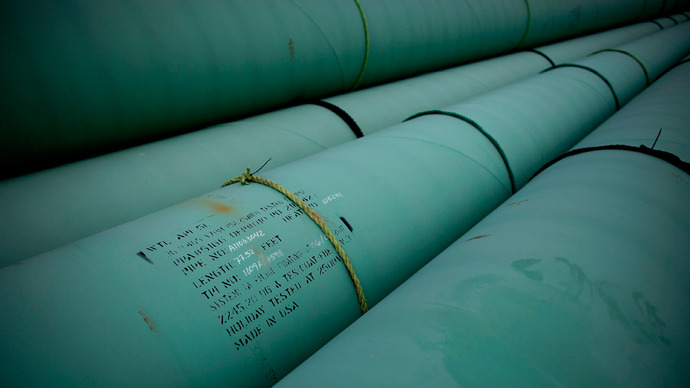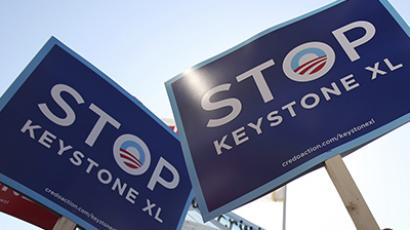EPA rebukes State Department's approval of Keystone XL pipeline

The future of a controversial oil project is now up in the air after the United States Environmental Protection Agency issued a letter condemning the State Department’s recent environmental impact review of the Keystone XL pipeline.
On Monday, EPA Assistant Administrator for Enforcement and Compliance Cynthia Giles wrote the US Department of State to say that that agency’s March 2013 environmental impact report was “insufficient.”
If approved, supporters of the project say the creation of a 1,700-mile pipeline stretching from Alberta, Canada to the Gulf of Mexico could create thousands of jobs and help alleviate concerns that America might become too oil-dependent on other nations. Environmentalists, however — and now the EPA — fear that the benefits of the Keystone XL pipeline might not outweigh the potentially catastrophic consequences that come with not just the construction of the project but the constant movement of toxic tar sands under the surface of the earth.
Oil giant TransCanada has been asking the White House to sign off on the project since 2008, and the debate has become a topic of contention among the Obama administration. Since the pipeline would cross international borders, the final go-ahead will likely come from the Department of State, which is tasked with deciding if a presidential permit should be issued to TransCanada. This week’s sharply worded critique of that agency’s latest assessment report suggests it won’t be a smooth process, though.
The EPA says that the State Department needs to go back and do some more research before it approves the pipeline, arguing over the course of several pages with the draft environmental impact assessment that agency released back in February.
When the State Department weighed in earlier this year, it largely found that approving the Keystone project would have little impact on climate change. The EPA says such isn’t the case, though, and insists the State Department do a more thorough analysis of what a major oil spill or other disaster spawned by the $7 billion project could do to the environment.
Should the Keystone XL pipeline be approved and an oil spill does occur, the Washington Post reports that upwards of 830,000 barrels of diluted bitumen crude could be jeopardized, and with it any part of the earth it touches.
In opposing the State Department’s review, Giles writes on behalf of EPA that the agency has provided “insufficient information,” and should go back and address a number of issues, including an analysis of oil spill risks, alternative pipeline routes and the possible dangers of greenhouse gas emissions associated with the project.
The Natural Resources Defense Council is one of the many groups opposed to the project, and celebrated the EPA memo as a momentary victory in their cause to keep the pipeline from being built..
“The EPA has got it exactly right — the State Department’s draft environmental review of the Keystone XL tar sands pipeline is inadequate,” NRD attorney Anthony Swift tells Washington Times. “The EPA determined that the Keystone XL would have significant negative environmental impacts.”
That sentiment was echoed by National Wildlife Federation senior counsel Jim Murphy, who tells the Los Angeles Times that the president “has more than enough information to determine the Keystone XL tar sands pipeline is not in America's national interest and he should reject it."
"The Environmental Protection Agency's letter shows that despite multiple tries, the State Department is incapable of doing a proper analysis of the climate, wildlife, clean water, safety and other impacts of this disastrous and unneeded project," says Murphy.
State Department spokesman Patrick Ventrell tells the Washington Post that his agency “has always anticipated that in preparing a [final environmental review] it would conduct additional analysis and incorporate public comments received on the” review that was published earlier this year.














